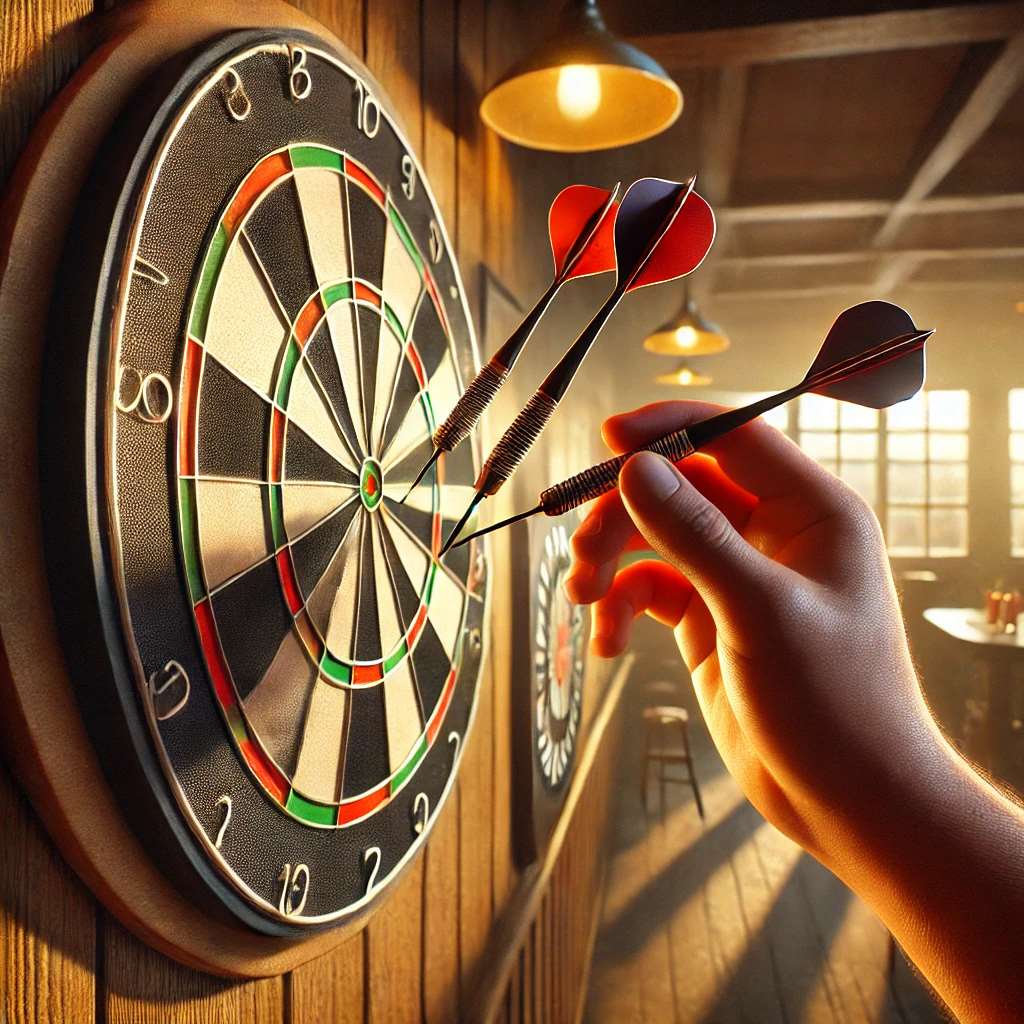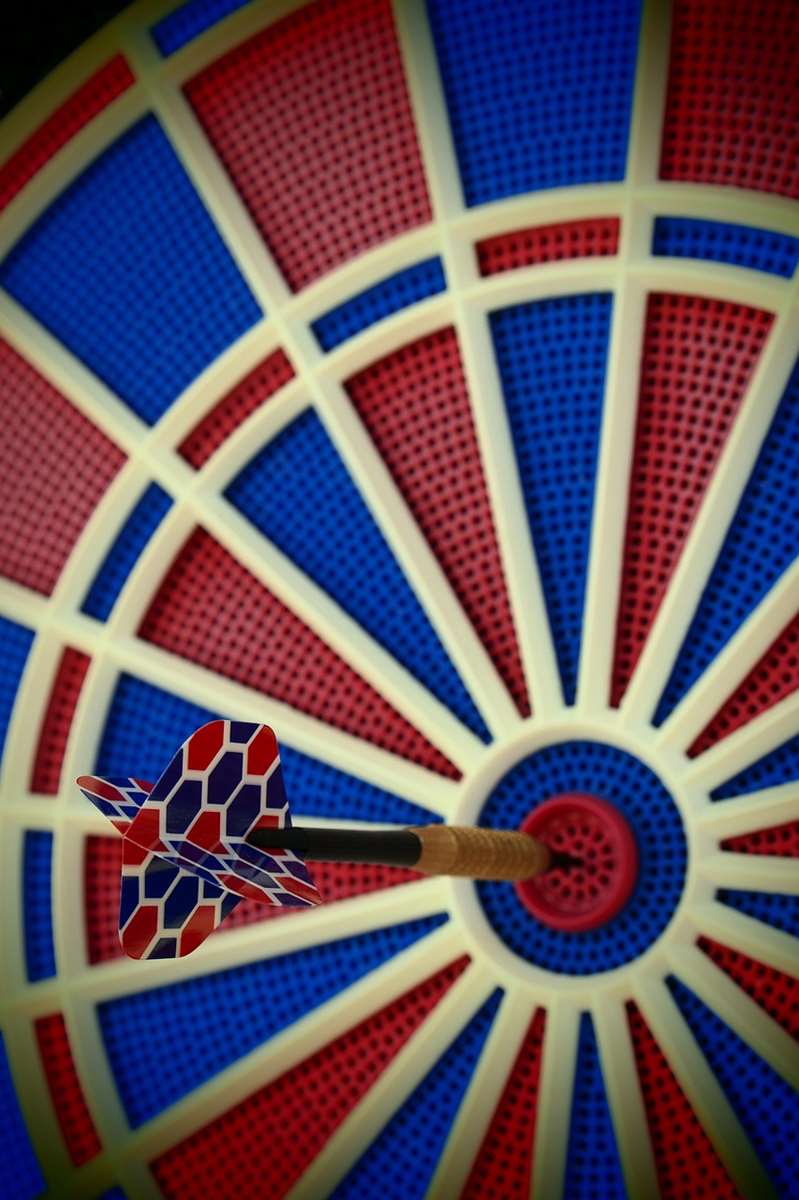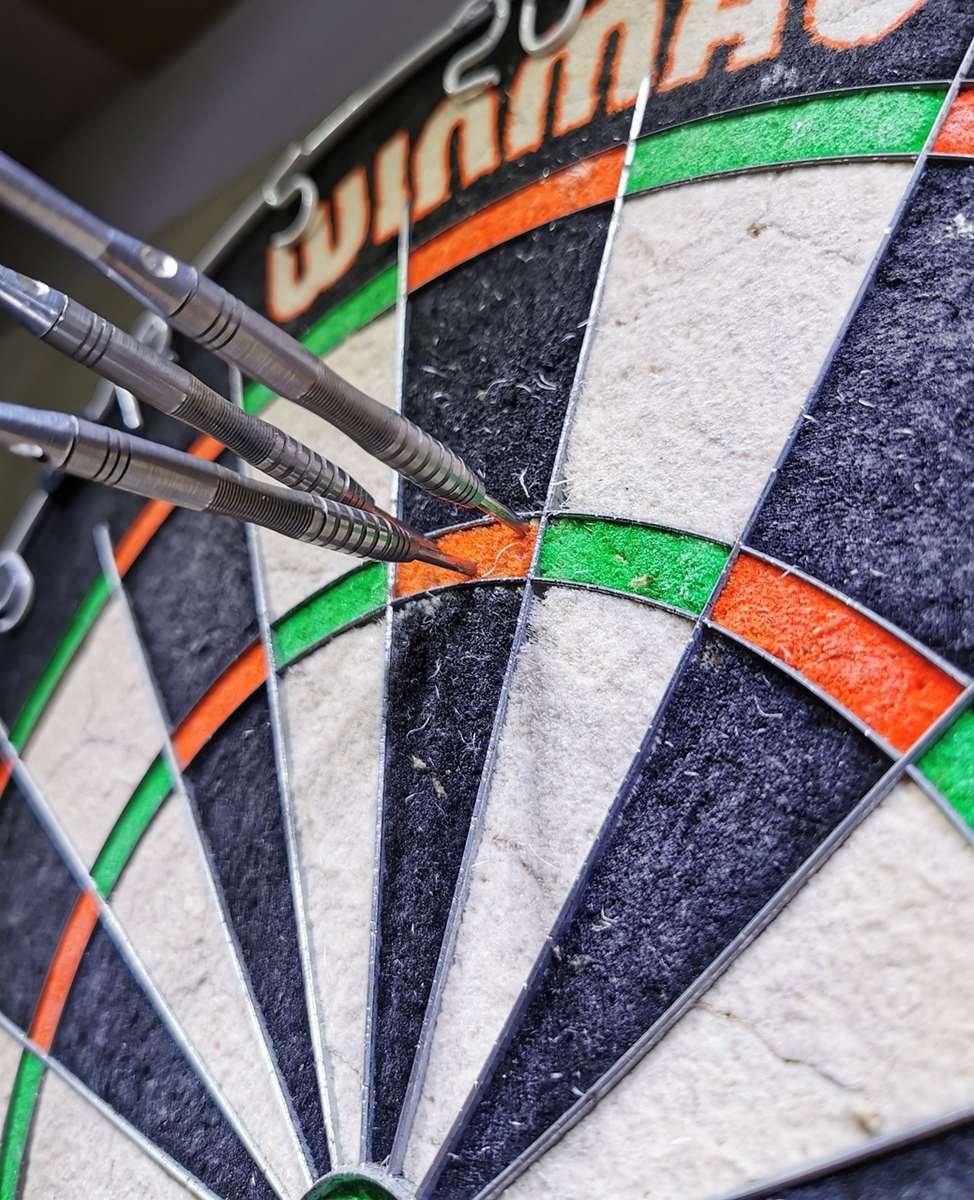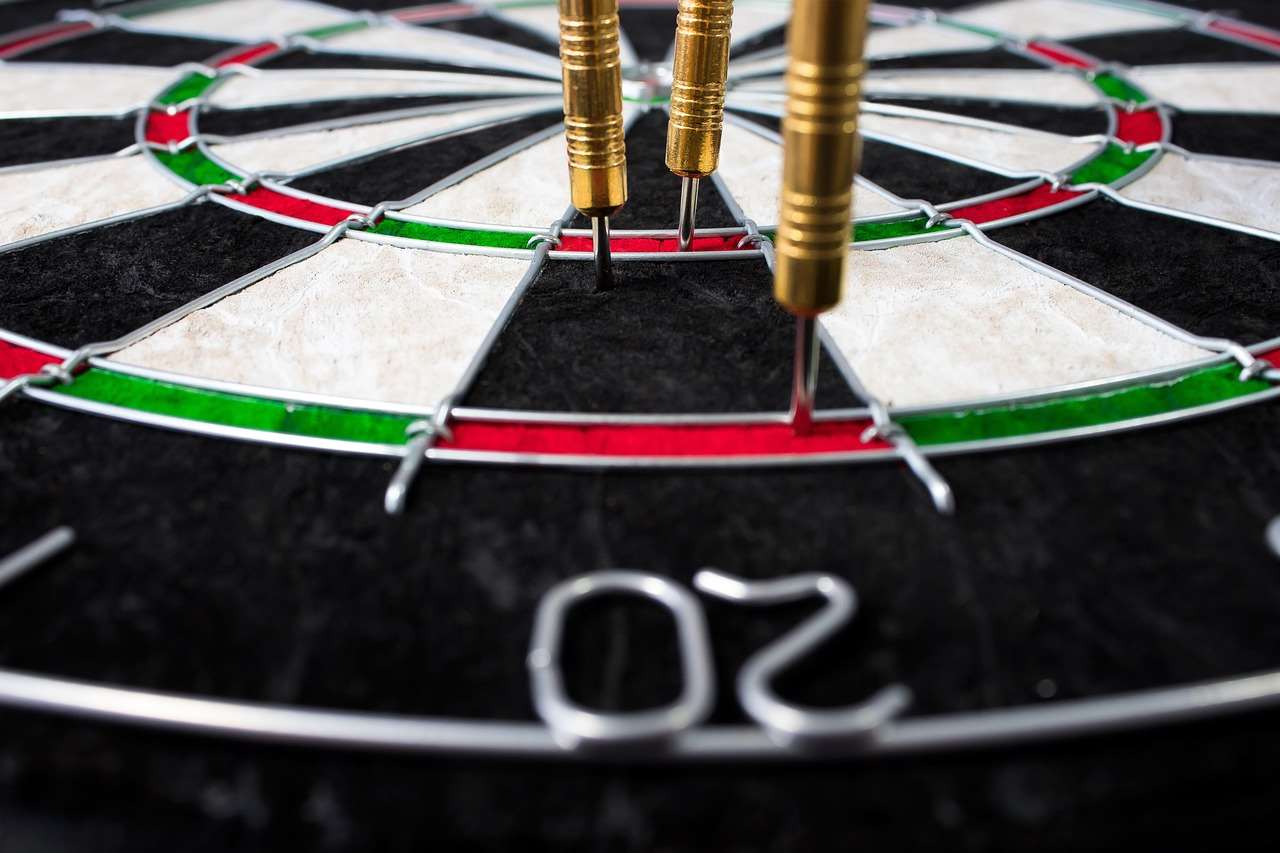To master out darts rules explained, you must understand the specific checkout combinations allowed to finish a game, typically requiring a double or the bullseye to end the round. This article delves into the intricacies of checkout strategies, common finishing combinations, and provides tips for improving your out game, helping you become a more consistent and strategic darts player.
⚠️ Still Using Pen & Paper (or a Chalkboard)?! ⚠️
Step into the future! The Dart Counter App handles all the scoring, suggests checkouts, and tracks your stats automatically. It's easier than you think!
Try the Smart Dart Counter App FREE!Ready for an upgrade? Click above!
Understanding the Basics of “Outs” in Darts
In darts, the term “out” refers to the final shot required to win a game. This often involves hitting a double or the bullseye to bring your score down to zero exactly. The core principle of “outing” is that you must end the game with a double or bullseye, no exceptions. Understanding this crucial aspect is the first step in mastering your out game.
The Importance of Checkout Numbers
Not all numbers are created equal when it comes to checkout opportunities. Numbers close to zero that allow for a double finish are prime targets. Knowing which numbers leave you in the best position to finish is key. For instance, leaving yourself on 32 (double 16) is generally considered a good position.

Common Checkout Combinations: Mastering Your Out Game
Memorizing common checkout combinations can significantly improve your game. Here are a few essential ones to learn:
- 40: Double 20
- 32: Double 16
- 16: Double 8
- 8: Double 4
- 4: Double 2
- 2: Double 1
- Bullseye: 50 (counts as a double)
Beyond the doubles, learning to set up finishes is just as important. For instance, if you have 60 left, aiming for a single 20 to leave 40 (double 20) is a smart play.
Checkout with Three Darts
More complex checkouts often involve three darts. Some common examples include:
- 170: T20, T20, Bullseye (the highest possible checkout)
- 167: T20, T19, Bullseye
- 164: T20, T18, Bullseye
- 161: T20, T17, Bullseye
- 160: T20, T20, D20
Learning these three-dart checkouts takes practice, but it can dramatically increase your chances of winning.
Strategic Thinking: Planning Your Route to the Out
Outing in darts is not just about hitting the final double; it’s about planning your route to that double. This requires strategic thinking and understanding the potential outcomes of each throw. Consider your skill level and the odds of hitting specific targets when planning your approach.
Calculating Probabilities and Risk Assessment
Experienced players often calculate the probabilities of hitting certain scores. For example, if you need 80, you could aim for T20 (triple 20) to leave 20. However, if you’re not confident in your triple accuracy, aiming for 20 (single 20) to leave 60 might be a safer option. This allows you to have two more darts to set up a finish.
The Importance of a “Plan B”
Even the best players miss their intended targets. Having a “Plan B” is crucial. For example, if you’re aiming for a T20 to leave a double and miss, what’s your next move? Knowing your fallback options can prevent you from ending up on awkward numbers that are difficult to check out. The Darts Variants Fun Games can help you practice this in a less competitive setting.

“Master Out Darts Rules Explained”: Avoiding Common Pitfalls
Several common mistakes can hinder your ability to check out effectively. Recognizing and avoiding these pitfalls is crucial for improvement.
Busting: A Costly Error
One of the most frustrating errors in darts is “busting,” which occurs when you reduce your score below zero or to one. Remember, you must finish with a double or bullseye. Avoiding busting requires careful calculation and awareness of the scores you need to leave.
Leaving Awkward Numbers
Some numbers are notoriously difficult to check out, often requiring unconventional combinations. For example, leaving yourself on 169 or 163 can be a real challenge. Try to avoid these numbers by planning your shots strategically.

Practice Drills to Improve Your Checkout Game
Consistent practice is essential for improving your checkout skills. Here are a few drills you can use to hone your abilities:
The “Around the Clock” Doubles Drill
Start by aiming for double one. Once you hit it, move on to double two, then double three, and so on, until you’ve hit all the doubles around the board. This drill improves your accuracy on each double and helps build confidence.
The 40, 60, 80, 100 Drill
This drill focuses on setting up finishes. Start with 40, then 60, then 80, and finally 100. Try to check out each number in as few darts as possible. This simulates real game scenarios and forces you to think strategically about your shots.
The Random Checkout Challenge
Have someone randomly call out numbers between 2 and 170. Your goal is to check out each number in as few darts as possible. This drill helps you adapt to different situations and improves your ability to calculate checkouts on the fly.
Advanced Checkout Strategies for Serious Players
Once you’ve mastered the basics, you can explore more advanced checkout strategies to gain a competitive edge. Understanding the psychological aspect of darts and using your opponent’s tendencies to your advantage are key components of advanced play.
Using Setups to Apply Pressure
Setting up a specific finish can sometimes be more advantageous than going directly for the checkout. For instance, if you know your opponent struggles to check out certain numbers, leaving them on those numbers can create psychological pressure and increase their chances of missing.
Anticipating Your Opponent’s Moves
Experienced players often try to anticipate their opponent’s moves and plan their shots accordingly. This might involve deliberately leaving a slightly more difficult checkout for yourself if it forces your opponent into a less favorable position.

The Role of Equipment in Mastering Your Out Game
While skill and strategy are paramount, your equipment can also play a role in your performance. Choosing the right darts, flights, and shafts can improve your consistency and accuracy.
Choosing the Right Darts
The weight, grip, and balance of your darts can significantly impact your throwing style. Experiment with different types of darts to find the ones that feel most comfortable and natural in your hand.
Flights and Shafts: Fine-Tuning Your Throw
Different flights and shafts can affect the trajectory and stability of your darts. Experiment with different combinations to find the ones that give you the best control and accuracy. Remember to check out old dart games rules for even more information.

Conclusion: Take Your Out Game to the Next Level
Mastering the art of “outing” in darts requires a combination of knowledge, skill, and strategic thinking. By understanding the master out darts rules explained, practicing common checkout combinations, and developing a strategic approach, you can significantly improve your chances of winning. Remember to avoid common pitfalls like busting and leaving awkward numbers. With consistent practice and dedication, you can take your out game to the next level and become a more formidable darts player. So, grab your darts, start practicing, and remember, every shot counts. Start applying these tips today to improve your accuracy and win more games! Now, go practice those doubles!
Hi, I’m Dieter, and I created Dartcounter (Dartcounterapp.com). My motivation wasn’t being a darts expert – quite the opposite! When I first started playing, I loved the game but found keeping accurate scores and tracking stats difficult and distracting.
I figured I couldn’t be the only one struggling with this. So, I decided to build a solution: an easy-to-use application that everyone, no matter their experience level, could use to manage scoring effortlessly.
My goal for Dartcounter was simple: let the app handle the numbers – the scoring, the averages, the stats, even checkout suggestions – so players could focus purely on their throw and enjoying the game. It began as a way to solve my own beginner’s problem, and I’m thrilled it has grown into a helpful tool for the wider darts community.